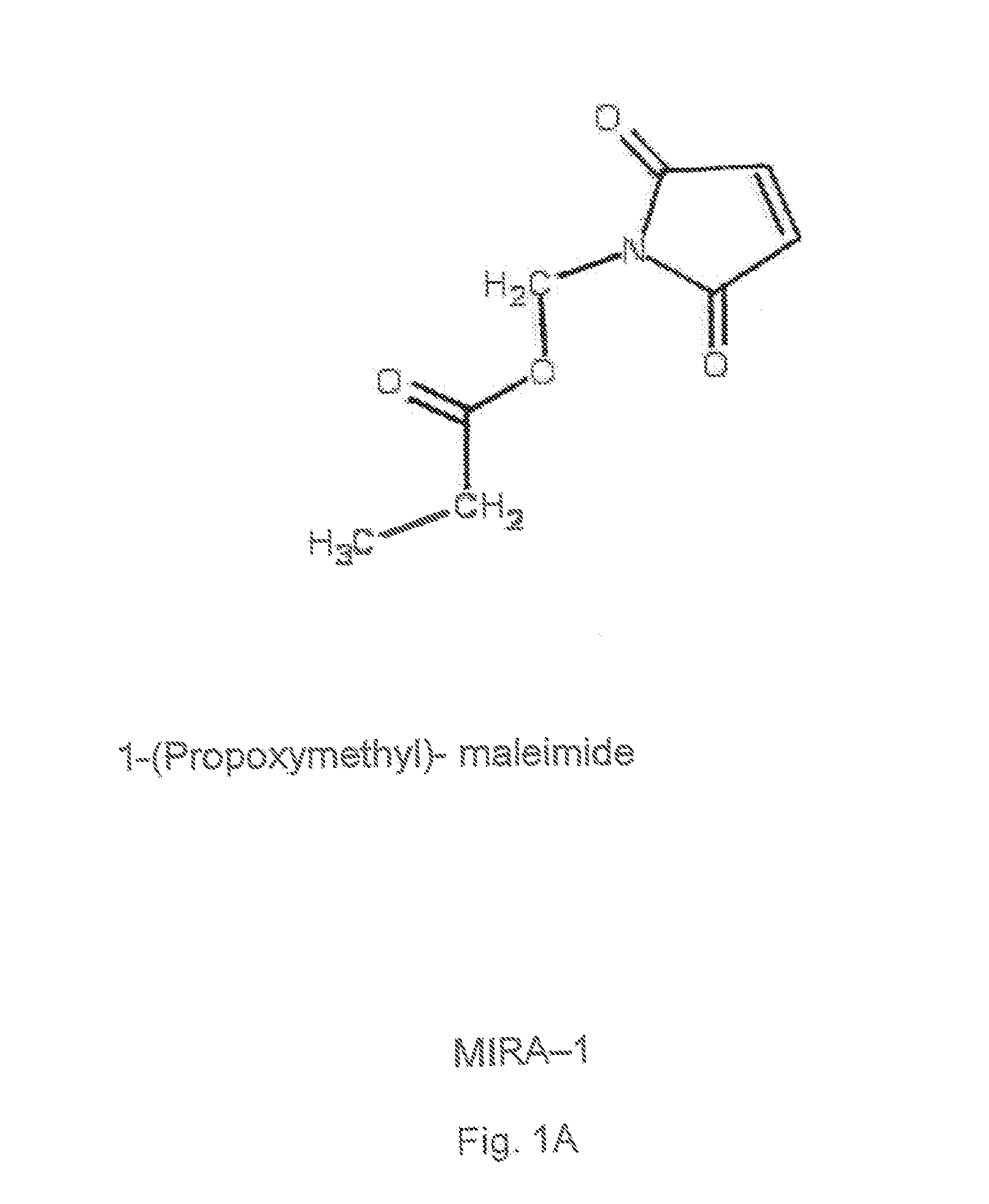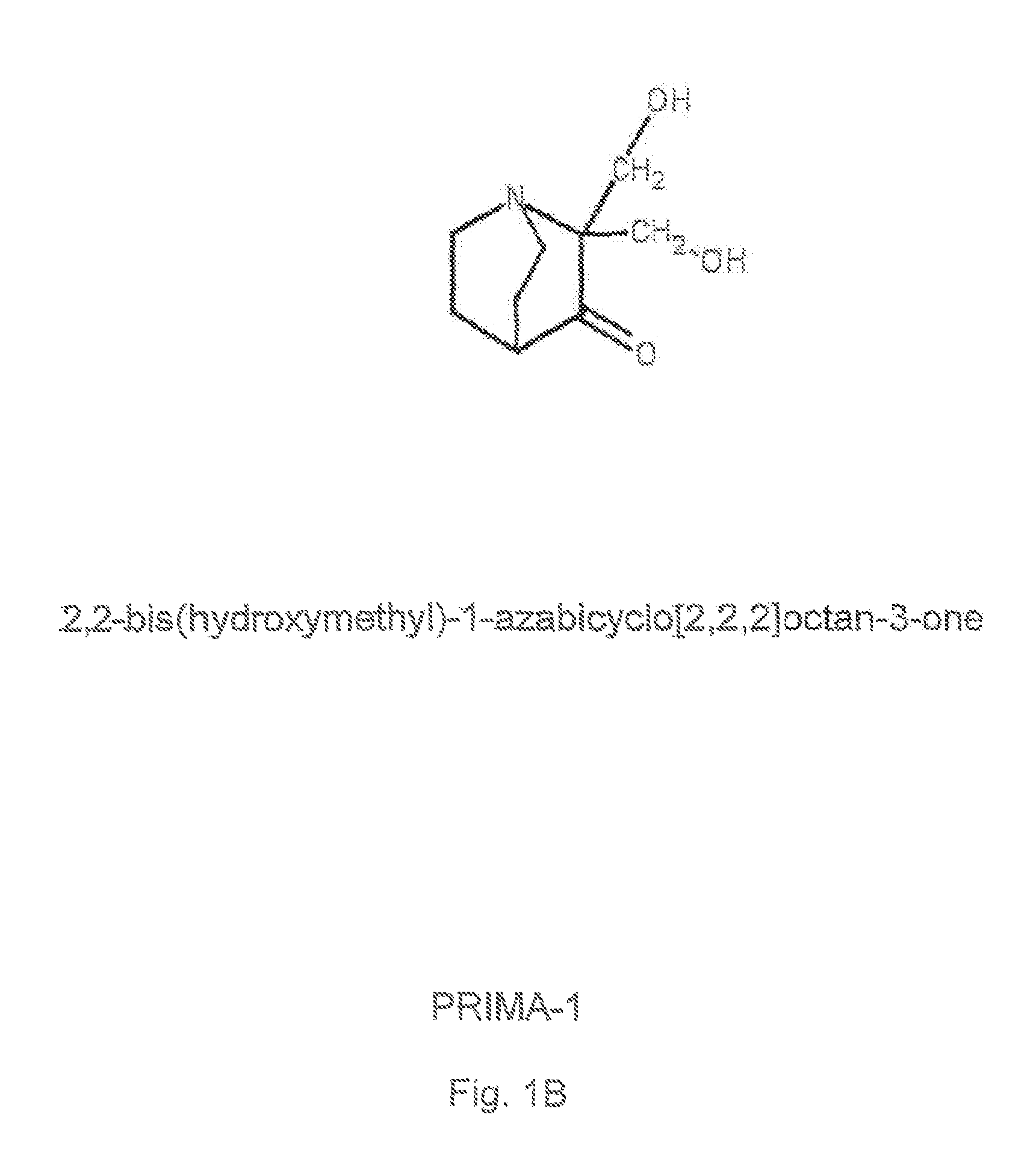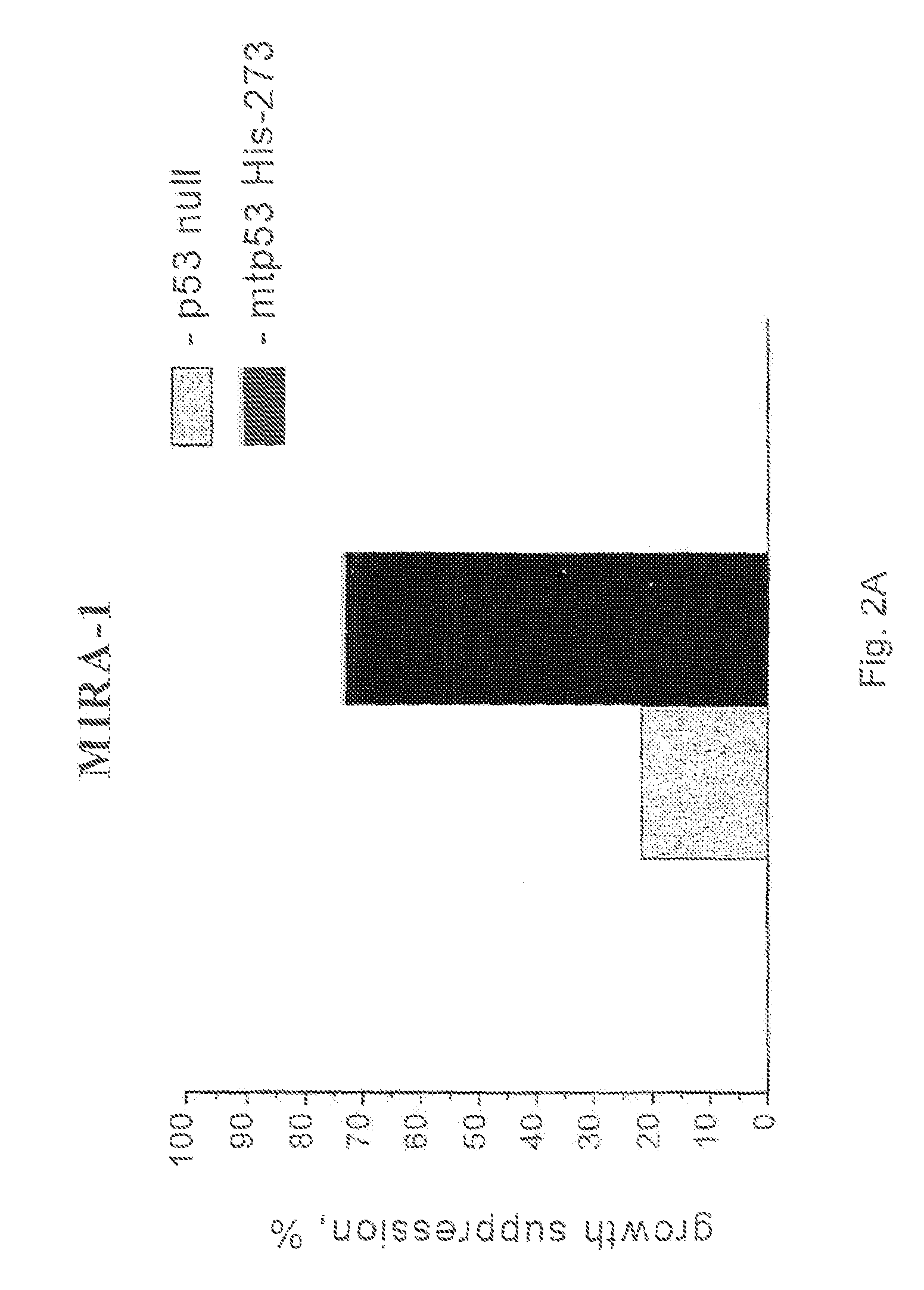Use of low molecular weight compounds for preparing a medicament useful in treating mutant p53 mediated diseases
a low molecular weight, compound technology, applied in the direction of heterocyclic compound active ingredients, biocide, drug compositions, etc., can solve the problem that mutant p53 proteins tend to accumulate at high levels
- Summary
- Abstract
- Description
- Claims
- Application Information
AI Technical Summary
Benefits of technology
Problems solved by technology
Method used
Image
Examples
Embodiment Construction
[0036]Accordingly, the present invention relates to the use of substances G and T capable of restoration of the wild type conformation and the sequence-specific DNA binding, transcriptional transactivation, and apoptosis-inducing functions of mutant p53 for preparing a medicament for treating mutant p53 mediated diseases. The substances T are analogues of 2,2-bis(hydroxymethyl)-1-azabicyclo[2.2.2]octan-3-one (PRIMA-1), which is shown in FIG. 1B for comparison. The substances G are analogues of 1-(propoxymethyl)-maleimide (MIRA-1), which is shown in FIG. 1A for comparison. Thus, it is to be understood that said substances need not be identical to the structures of formulae I and II, but may include variations, as long as the activity thereof is preserved. Thus, said substance may also be a derivative of the structures of formulae I and II. Also it is to be understood that in the present application, the human p53 is particularly preferred, even though p53 molecules of other origins m...
PUM
| Property | Measurement | Unit |
|---|---|---|
| concentration | aaaaa | aaaaa |
| weight | aaaaa | aaaaa |
| weight | aaaaa | aaaaa |
Abstract
Description
Claims
Application Information
 Login to View More
Login to View More - R&D
- Intellectual Property
- Life Sciences
- Materials
- Tech Scout
- Unparalleled Data Quality
- Higher Quality Content
- 60% Fewer Hallucinations
Browse by: Latest US Patents, China's latest patents, Technical Efficacy Thesaurus, Application Domain, Technology Topic, Popular Technical Reports.
© 2025 PatSnap. All rights reserved.Legal|Privacy policy|Modern Slavery Act Transparency Statement|Sitemap|About US| Contact US: help@patsnap.com



